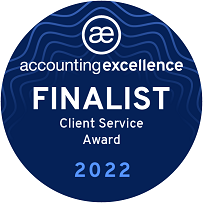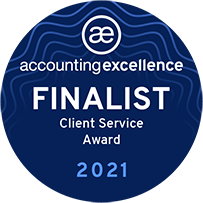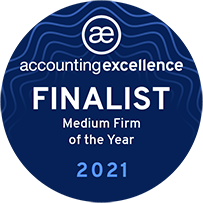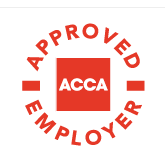VAT margin schemes
The VAT Margin scheme is when you charge your customers VAT on your sales, without incurring
unfair VAT liabilities on the sales that are eligible for a margin scheme. This is because HMRC has
introduced a fairer way to declare the VAT on sales for businesses that do not incur VAT on their
purchases.
How it works
Usually, as a VAT-registered business, you would charge VAT on the sale of goods. If you paid VAT on
the purchase, you could offset this VAT incurred against the VAT charged on sales, resulting in a VAT
liability or refund.
If no VAT was charged on the purchase of these goods, you will pay the full amount of this sales VAT
to HMRC. This could mean that due to being VAT-registered, you are having to charge your customers
more or even taking the hit yourselves and reducing the sales price.
With a VAT margin scheme, the VAT you pay is one-sixth of the difference between what you paid for
an item, and what you sold it for, rather than the full selling price. Due to this, you can only use the
margin scheme when you sell the following items:
- Second-hand goods: The goods must still be able to be used or used after repair.
- Works of art: Most works of art are eligible, although technical drawings, scenery for theatres
and hand-decorated manufactured items are not. - Antiques: Antique items must be goods over 100 years old.
- Collectors’ items: This includes collectors’ items such as stamps, coins and currency. Although
please note that not all collectable items are eligible for a margin scheme.
You cannot use a margin scheme if you were charged VAT on any of your purchases.
Example
Purchase some second-hand clothes for £1,500 at No VAT.
Sell these clothes for £2,000 including VAT at 20%.
Standard cash accounting
VAT on Sales: £400
VAT on Purchases: (£0)
VAT due to HMRC £400
VAT Margin Scheme
Purchase price: £1,500
Selling price: £2,000
Difference: £500
VAT on 1/6: £83.33
Therefore, being on this scheme saved VAT of £316.67.
If some of the items you buy and sell are not eligible for a margin scheme, you pay and charge VAT for
those items in the normal way
Record Keeping
VAT records must be kept for 6 years, and they must include copies of the purchase and sales invoices
for all items and a stock book that tracks each item sold under the margin scheme individually.
Invoices– To use the margin scheme, you must have invoices for each item that meet the VAT margin
scheme requirements. Including an invoice from the seller upon purchase, and a copy of the invoice
given to the buyer when sold.
Buying invoices must include:
- Date
- Seller’s name and address
- Your name and address/ business.
- Item description
- Total price
Selling invoices must include:
- Date
- Your name and address/ business.
- Invoice number
- VAT registration number
- Item description
- Total price (Do not show separate VAT).
- Detail of the margin scheme used (E.g., Second-hand goods).
Stock book – Please see the example below.
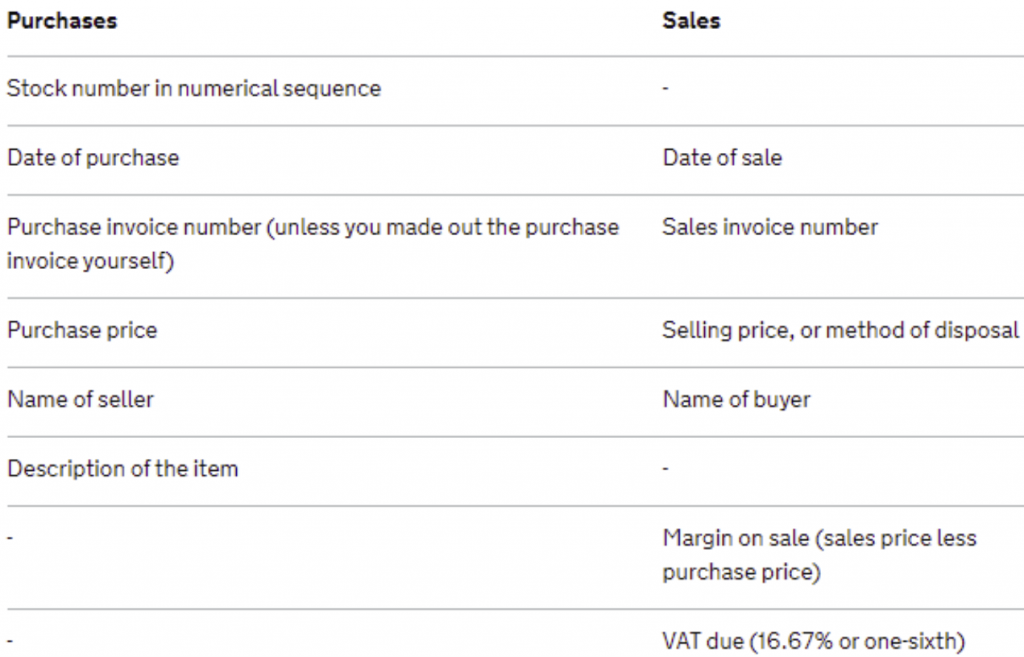
When submitting a VAT return you do not have to include margin scheme purchases, or sales, in
boxes 8 and 9 of your VAT return.

If you are unsure if a particular item is eligible for the margin scheme, please contact your client
portfolio manager here at PJCO.
Contact

You may also like…
VAT retail scheme
VAT flat rate scheme
VAT reverse charge
VAT for health professionals
Cross border VAT-Goods arriving UK
Cross border VAT- Goods leaving UK
